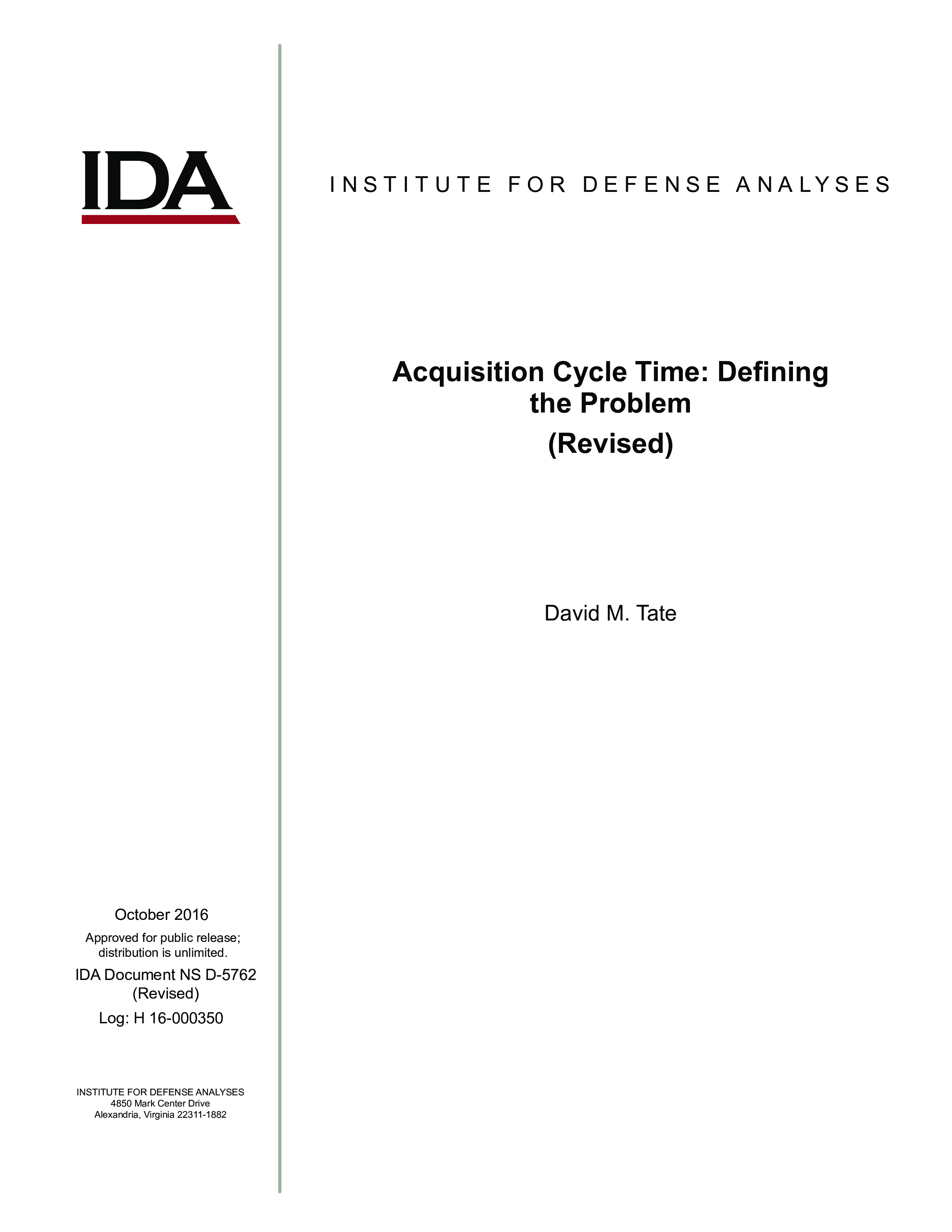Cycle times (or development lead times) for defense weapon systems are a hot topic in the
defense world. In September of 2014, the Under Secretary for Acquisition, Technology and
Logistics, the Honorable Frank Kendall, issued Version 3 of the Better Buying Power (BBP)
initiative. One focus area of BBP 3.0 is “Reduce cycle time while ensuring sound investments”
(Kendall, 2014). The lead article (Schultz, 2014) in the November-December 2014 issue of
AT&L Magazine was entitled “Please Reduce Cycle Time.” RAND produced a 2014 report
entitled Prolonged Cycle Times and Schedule Growth in Defense Acquisition: A Literature
Review (Riposo, McKernan, and Kaihoi, 2014). The House Armed Services Committee held
hearings in October 2015 on the topic “Shortening the Defense Acquisition Cycle.”1
Many commenters on defense acquisition have asserted that it now takes too long to
develop and field new systems, and that we should do something about it. They say that the pace
of technological advancement, especially in electronics and information technology, is now so
fast that our “advanced” military systems are nearly obsolete by the time they are fielded. Even
seemingly mundane systems, such as troop transport vehicles and cargo aircraft, seem to take
forever to field.

